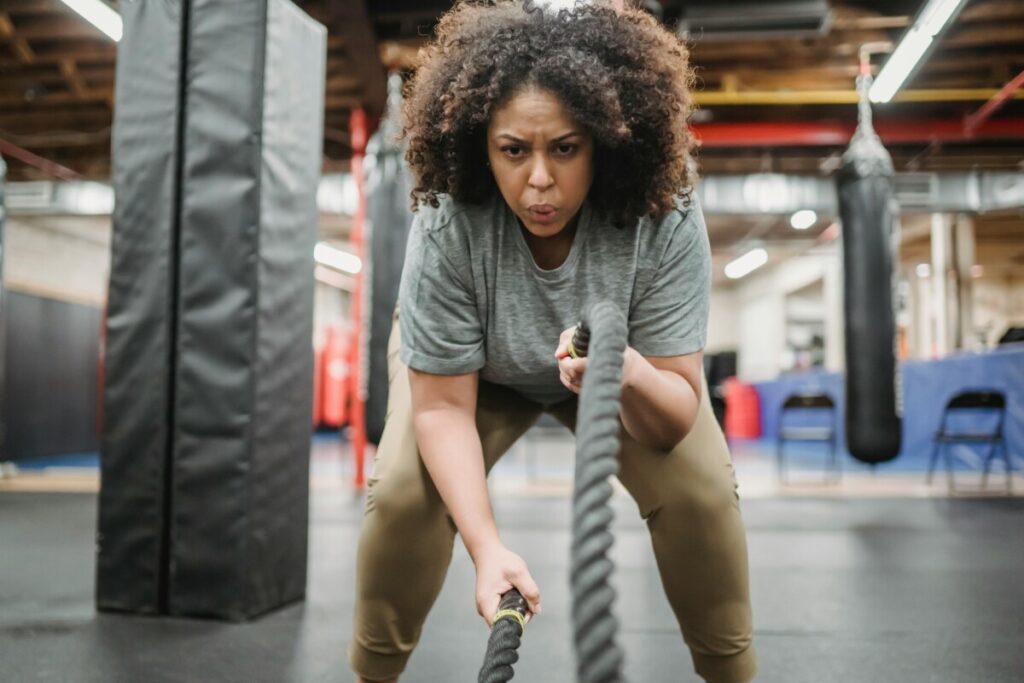“Unlock the Benefits of Resistance Bands”

Resistance bands have emerged as versatile tools in the fitness world, offering a myriad of benefits for individuals of all fitness levels. From enhancing strength and flexibility to aiding in rehabilitation, these simple yet effective bands have revolutionized the way we approach exercise routines. In this comprehensive guide, we’ll delve into the various aspects of resistance bands, understanding their functionality, benefits, and practical applications.
What are resistance bands and how do they work?
Resistance bands, also known as exercise bands or workout bands, are elastic bands made from rubber or similar materials. They work on the principle of providing resistance against muscular contraction during exercises. Unlike traditional weights, resistance bands create tension throughout the entire range of motion, challenging muscles in multiple directions.
How do resistance bands add to your workout?
Resistance bands offer a dynamic form of resistance, allowing for a wide range of motion and versatility in exercises. They can be used to target specific muscle groups or engage multiple muscles simultaneously, making workouts more efficient and effective.
What are the benefits of using resistance bands?
The benefits of using resistance bands are plentiful. They include improved strength, increased flexibility, enhanced mobility, and better coordination. Additionally, resistance bands are portable, affordable, and suitable for various fitness levels, making them accessible to almost anyone.
Exploring the physical therapy benefits of resistance bands
Resistance bands are commonly used in physical therapy settings to aid in rehabilitation and injury prevention. They provide gentle resistance, allowing for gradual progression in strength and flexibility exercises. Moreover, resistance bands are gentle on joints, making them ideal for individuals recovering from injuries or managing chronic conditions.
How resistance bands aid in strength training
Resistance bands can effectively build muscle strength by providing resistance in both concentric and eccentric muscle contractions. They can be incorporated into traditional strength training exercises such as squats, lunges, and chest presses to increase intensity and challenge muscles in new ways.
Understanding the benefits of resistance bands in weight training
Resistance bands can be used as a supplement or alternative to free weights or machines in weight training. They offer constant tension throughout the movement, promoting muscle activation and growth. Additionally, resistance bands allow for progressive overload, enabling individuals to increase resistance as they become stronger gradually.
How to incorporate resistance bands into your workout routine
Incorporating resistance bands into your workout routine is simple and versatile. They can be used alone or combined with other equipment such as dumbbells or stability balls. From strength training to stretching exercises, resistance bands can add variety and challenge to any workout regimen.
Effective resistance band exercises for strength training
There is a wide range of exercises that can be performed using resistance bands to target different muscle groups. Some effective exercises include bicep curls, tricep extensions, shoulder presses, rows, and leg lifts. These exercises can be modified to suit individual fitness levels and goals.
Using resistance bands to improve mobility and flexibility
Resistance bands are excellent tools for improving mobility and flexibility. They can be used to perform dynamic stretches, mobility drills, and proprioceptive exercises that help improve joint range of motion and enhance overall flexibility.
Integrating resistance bands for a full-body workout
By incorporating resistance bands into a full-body workout routine, you can engage multiple muscle groups simultaneously and achieve a comprehensive workout. Combine upper body, lower body, and core exercises for a balanced and effective training session.
Different types of resistance bands and their unique benefits
There are various types of resistance bands available, each with its unique benefits. These include loop bands, therapy bands, tube bands, and figure-eight bands. Understanding the differences between these types can help you choose the most suitable option for your fitness needs.
Understanding the various types of resistance bands available
Loop bands are versatile bands that can be used for both upper and lower body exercises. Therapy bands are typically flat bands with varying levels of resistance, making them suitable for rehabilitation and physical therapy. Tube bands feature handles for added grip and are ideal for strength training exercises. Figure-eight bands offer a secure grip and are often used for lower body exercises.
Exploring the benefits of loop bands and therapy bands
Loop bands are ideal for exercises targeting the lower body, such as squats, lunges, and glute bridges. They can also be used for upper-body exercises like bicep curls and lateral raises. Therapy bands are excellent for rehabilitation exercises, injury prevention, and improving flexibility.
How to choose the right resistance band for your fitness level
When selecting a resistance band, consider factors such as resistance level, material, and handle type. Beginners may start with lighter resistance bands and gradually progress to heavier ones as they build strength. It’s essential to choose a band that offers enough resistance to challenge your muscles without causing strain or discomfort.
Tips for maximizing the benefits of resistance bands
To maximize the benefits of resistance bands, ensure proper form and technique during exercises. Focus on controlling the movement and maintaining tension throughout each repetition. Incorporate a variety of exercises and resistance levels into your routine to prevent plateaus and keep your workouts challenging.
How to safely add resistance bands to your exercise routine
To prevent injuries when using resistance bands, start with a proper warm-up to prepare your muscles for exercise. Use correct posture and alignment during exercises, and avoid overstretching or jerky movements. Listen to your body and stop if you experience any pain or discomfort.
Building strength and resistance level with resistance bands
As you become stronger and more accustomed to using resistance bands, you can gradually increase resistance levels to continue challenging your muscles. Experiment with different band tensions and variations of exercises to keep your workouts engaging and effective.
Utilizing resistance bands for rehabilitation and injury prevention
Whether recovering from an injury or aiming to prevent future injuries, resistance bands can be valuable tools in your rehabilitation and injury prevention routine. Focus on exercises that target weak or injured muscles while gradually increasing resistance and intensity as your strength improves.
Conclusion
Resistance bands offer a versatile and effective way to enhance strength, flexibility, and mobility. From beginners to seasoned athletes, anyone can benefit from incorporating resistance bands into their workout routine. By understanding the various types of bands available, selecting the right resistance level, and performing exercises properly, you can unlock the numerous benefits of resistance bands and achieve your fitness goals effectively.
https://serenity7wellness.com/index.php/2023/12/13/top-5-flexibility-exercises/
https://my.clevelandclinic.org/?_gl=1*w32jdf*_ga*NzY1MjUzNzkyLjE3MDc4NTIzOTk.*_ga_HWJ092SPKP*MTcwNzg1MjM5OC4xLjAuMTcwNzg1MjM5OC4wLjAuMA..
FAQ’s
Q: What are the benefits of resistance band training?
A: Resistance band training offers a wide range of benefits, including improved strength gains, increased flexibility, and a full-body workout. It’s also a great option for those who want to add variety to their exercise routine.
Q: How effective are resistance band workouts?
A: Resistance band workouts can be highly effective, as they work your muscles in a different way than traditional weights and machines. They also provide variable resistance, allowing you to increase or decrease resistance as needed.
Q: Do resistance bands work for building muscle?
A: Yes, resistance bands are a great tool for building muscle. They offer a unique form of resistance that can help stimulate muscle growth and are particularly effective for targeting specific muscle groups.
Q: Can resistance bands provide the same benefits as using weights and machines?
A: Resistance bands can provide similar benefits to traditional weights and machines, and in some cases, they may offer additional advantages such as improved joint mobility and a more natural range of motion.
Q: Are there any limitations to using resistance bands?
A: While resistance bands offer many benefits, they may not be the best option for individuals looking for maximum resistance or muscle isolation. However, with proper technique and variety in exercises, resistance bands can be highly effective.







